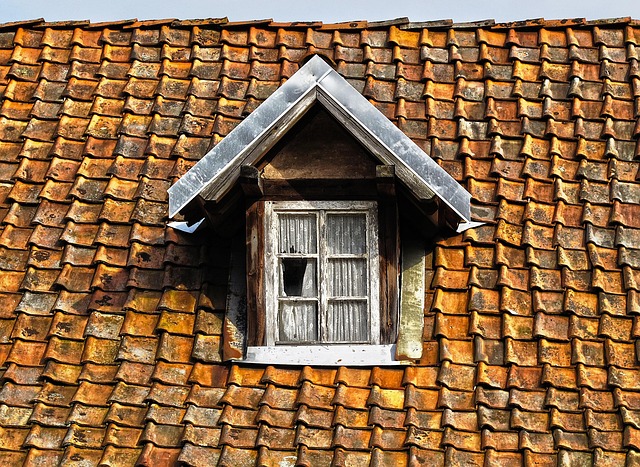Tile sealing is crucial for protecting and maintaining tiled surfaces, preventing moisture, dirt, and contaminants from penetrating grout. Various sealant types—water-based, solvent-based, and urethane-based—offer distinct benefits tailored to different tile types, installation environments, and desired protection levels. Proper surface preparation, choosing the right sealer, meticulous application, and regular maintenance are key to achieving optimal results, preserving durability, vibrancy, and aesthetic appeal. Professional sealing services extend tile lifespans, enhance aesthetics with glossy finishes, and simplify cleaning routines, particularly in high-moisture areas like bathrooms and kitchens.
Tile sealing is an essential step in maintaining a vibrant, durable, and easy-to-clean grout and tile surface. This comprehensive guide explores the ins and outs of tile sealing, from understanding its purpose to selecting the perfect sealer for your space. We’ll walk you through various types of sealers, application techniques, common pitfalls to avoid, and advanced methods for specific needs. Discover why professional tile sealing services can elevate your space, ensuring long-lasting protection and beauty for years to come.
Understanding Tile Sealing: What It Is and Why It Matters

Tile sealing is a crucial process in maintaining and protecting your tiled surfaces. It involves applying a protective coating to the grout lines and tile surfaces, creating a barrier against moisture, dirt, and other contaminants. This simple yet effective step is essential for several reasons.
First and foremost, it prevents water penetration into the grout, which can cause damage and lead to costly repairs over time. By sealing your tiles, you also make cleaning easier as it repels dirt and grime, allowing for a quick wipe-down instead of tedious scrubbing. This not only saves time but also prolongs the life of your tiles, ensuring they remain vibrant and in good condition for years to come.
The Types of Sealers Available: An Overview

When it comes to tile sealing, the market offers a diverse range of options catering to various needs and preferences. The types of sealers available can be broadly categorized into three main categories: water-based, solvent-based, and urethane-based sealants. Water-based sealers are popular choices for their low odour, quick drying time, and environmental friendliness, making them ideal for residential spaces and areas with poor ventilation. They provide a durable, water-repellent barrier but may not offer the same level of protection against stains as other types.
Solvent-based sealers, on the other hand, are known for their exceptional stain resistance and ability to penetrate porous surfaces effectively. These sealants emit strong odours during application and have longer drying times, which might be a consideration in enclosed spaces. Urethane-based sealers fall between the two, offering good stain resistance and faster drying times compared to solvent-based options. They are versatile and suitable for both indoor and outdoor applications, providing an excellent balance between durability and ease of maintenance. Each type has its unique advantages, making it crucial to understand your specific requirements before choosing a tile sealer for optimal results in terms of Tile Sealing.
Choosing the Right Sealer for Your Project

Choosing the right sealer is a crucial step in any tile sealing project. It depends on several factors, including the type of tiles, the environment where they’re installed (like humidity levels and sunlight exposure), and your desired level of protection. For instance, kitchen and bathroom tiles often require water-repellent sealers due to high moisture content, while decorative tiles in entryways might benefit from a more durable, long-lasting sealer that can withstand heavy foot traffic.
When selecting a tile sealer, consider the specific benefits each type offers. Some sealers provide better stain resistance, others enhance gloss and color, while still others improve adhesion for easier cleaning. Reading product descriptions and understanding application instructions will ensure you pick the most suitable sealer for your project, guaranteeing long-lasting protection for your tiles.
Step-by-Step Guide to Effective Tile Sealing

Tile sealing is a crucial step in maintaining the beauty and longevity of your tiled surfaces. Here’s a straightforward, step-by-step guide to ensure effective tile sealing.
1. Prepare the Surface: Start by thoroughly cleaning the tiles and grout using a mild detergent or tile cleaner. Rinse well and ensure all residue is removed. Dry the surface completely before proceeding. This preparation ensures that your sealer adheres properly.
2. Choose the Right Sealer: Select a high-quality tile sealer suitable for your specific tiles (ceramic, porcelain, etc.). Read product labels to understand the type of protection offered (waterproof, stain resistance, etc.). A professional can also advise on the best option based on your environment and needs.
3. Apply the Sealer: Follow the manufacturer’s instructions regarding application methods and timing between coats. Typically, you’ll use a brush or spray to apply the sealer, ensuring even coverage on both tiles and grout. Allow each coat to dry as recommended before applying the next.
4. Buffer and Inspect: After the final coat has dried, buffer the surface gently with a clean cloth to achieve a smooth finish. Inspect your sealed tiles for any missed spots or uneven application. Touch up as needed.
Common Mistakes to Avoid During the Sealing Process

When it comes to tile sealing, there are several common mistakes that homeowners and professionals alike should be aware of to ensure optimal results. One of the most frequent errors is neglecting to properly prepare the surface before applying the sealer. This includes not cleaning and drying the tiles thoroughly, which can lead to an uneven finish and reduced effectiveness of the sealer.
Another mistake is using the wrong type of sealer for the specific tile and environment. Different tiles—porcelain, ceramic, natural stone—have varying porosity and require sealers designed to address their unique properties. Additionally, factors like humidity and foot traffic demand specific sealer choices. Using an unsuitable sealer can result in premature aging, loss of color, or even damage to the tile surface. Always research and select a high-quality sealer appropriate for your tile type and conditions to avoid these pitfalls related to tile sealing.
Maintenance and Touch-Ups: Keeping Your Tiles Protected

Regular maintenance and touch-ups are essential for keeping your tiles protected and looking their best. Tile sealing acts as a protective barrier, preventing moisture, stains, and dirt from penetrating the grout and tile surfaces. Over time, this barrier can wear down, especially in high-traffic areas or places with exposure to harsh chemicals or excessive water.
To maintain your sealed tiles, it’s crucial to perform routine inspections and address any issues promptly. Light scrubbing with a soft-bristled brush and a neutral cleaner is typically sufficient for removing surface dirt and grime. For more stubborn stains, consider using a grout cleaning solution specifically designed for sealed tiles. Regular touch-ups with a fresh coat of sealer can also help restore the protective layer, ensuring your tiles remain vibrant and durable for years to come.
Advanced Techniques for Special Applications

In certain special applications, advanced tile sealing techniques offer enhanced protection and aesthetics. For instance, in high-moisture areas like bathrooms or kitchens, specialized sealants designed to resist water penetration and mold growth are crucial. These advanced sealers not only provide a durable barrier but also maintain the vibrancy of tiles, preventing staining and discoloration.
Additionally, for tiles with intricate patterns or unique finishes, specific sealing methods are required to preserve their visual appeal. This includes using porous-tile-friendly products that don’t compromise the tile’s breathability or damage delicate surfaces. Such tailored solutions ensure that not only is the tile sealed effectively, but its beauty and longevity are preserved, making it ideal for both residential and commercial spaces.
The Benefits of Professional Tile Sealing Services

Professional tile sealing services offer a multitude of benefits that can significantly enhance the longevity and aesthetic appeal of your tiled surfaces. One of the primary advantages is the extended lifespan of the tiles themselves. Sealing protects against moisture, stains, and dirt, which are major contributors to tile damage over time. By creating an impermeable barrier, professional sealants guard against water absorption, preventing the growth of mold and mildew that can weaken tile structures.
Moreover, tile sealing enhances the overall appearance and curb appeal of your space. It provides a glossy finish that not only makes tiles look new but also increases their reflectivity, making them appear larger and brighter. This visual enhancement is particularly noticeable in areas like kitchens, bathrooms, and entryways where tiles are heavily trafficked or exposed to high humidity levels. Professionally applied sealing also simplifies cleaning routines, as sealed tiles repel stains and make it easier to wipe away dirt and grime with minimal effort.
